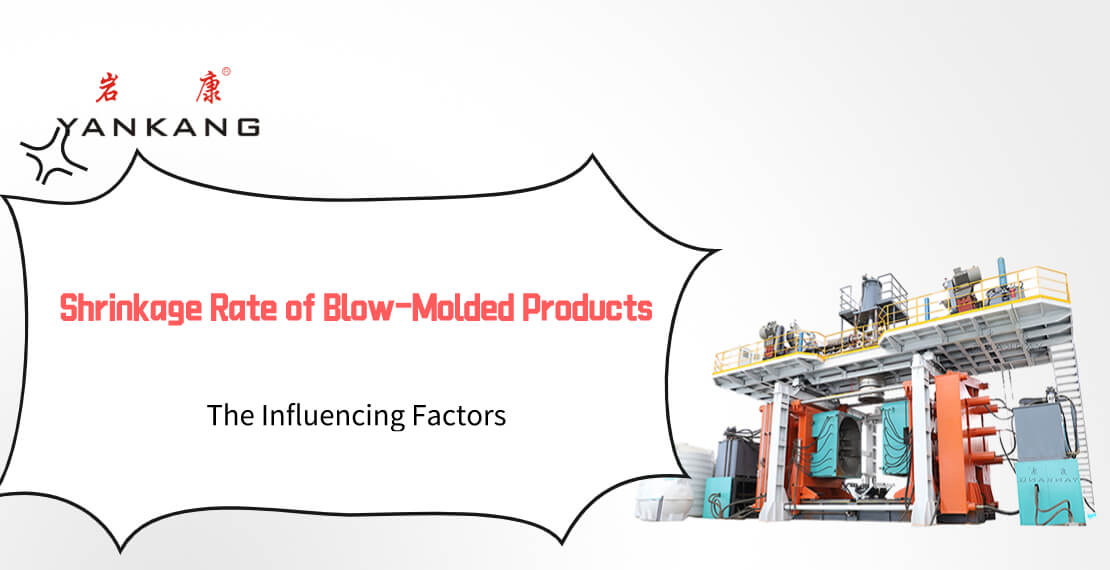Today, let’s talk about the factors that affect the shrinkage rate of blow-molded products.
Simply put, molding shrinkage means that the volume of the product cooled to room temperature is smaller than the cavity volume of the molding die at room temperature. When we design the mold, we generally use the average shrinkage rate to calculate the shrinkage value of the blow-molded product.
The main factors affecting the shrinkage of blow-molded products are as follows:
First, the influence of the molding process on the shrinkage rate of blow-molded products.
When the molding temperature is constant, the blow molding pressure will increase, and the shrinkage rate will decrease at this time. When the mold temperature increases, the shrinkage rate increases. The longer the cooling time in the mold, the smaller the shrinkage.
Second, the influence of pressure on the shrinkage rate of blow-molded products.
Increasing the blow molding pressure can reduce the shrinkage of the product. This is because the increase in pressure increases the blow molding speed. After the filling process is accelerated, on the one hand, the melt temperature is increased due to the shear heating of the plastic melt, and the flow resistance is reduced; on the other hand, it can also be used in the melt. When the temperature is still high and the flow resistance is small, it enters the pressure maintaining and refilling stage earlier.
Third, the influence of mold structure on the shrinkage rate of blow-molded products.
The shape, size, wall thickness, presence or absence of inserts, number of inserts, and their distribution of plastic products have a great influence on the shrinkage rate. Generally speaking, plastic parts are complex in shape, small in size, thin in-wall, with inserts, and the number of inserts is large and symmetrically distributed, and its shrinkage rate is small.
Fourth, the impact of the properties of plastic resins on the shrinkage of products.
Different resin materials have different shrinkage rates. Even if the same type of resin material is produced by different manufacturers or the same material with different batch numbers by the same manufacturer, their shrinkage rates are different. Moreover, due to the inherent characteristics of the resin, the shrinkage range is wide or narrow.
The shrinkage rate of crystalline plastics is greater than that of amorphous plastics; plastics with good fluidity have low molding shrinkage rates; when fillers are added to the plastics, molding shrinkage rates are significantly reduced; the same plastics in different batches have different molding shrinkage rates.
Fifth, the influence of the temperature of the raw material on the shrinkage of the product.
The effect of material temperature on molding shrinkage is the result of the combined effects of heat shrinkage, crystalline shrinkage, orientation shrinkage, and pressure holding shrinkage. If the impact of the first three types of shrinkage is relatively large, the final shrinkage rate of the product will increase with the temperature of the melt. Higher and higher; on the contrary, when the pressure maintaining and feeding effect is greater, the shrinkage rate will decrease as the temperature rises.
In short, the product shrinkage is the result of the combined effects of the two reverse shrinkages, and the final value does not necessarily increase with the increase of mold temperature. If the gate freezes, the influence of the blow molding pressure and the holding pressure will disappear. As the mold temperature increases, the time for cooling and setting will be prolonged, resulting in an increase in the shrinkage of the product after demolding.
The above are the factors that affect the shrinkage rate of blow-molded products.
Pay attention to the Yankang blow molding machine and learn more about the blow molding machine.

